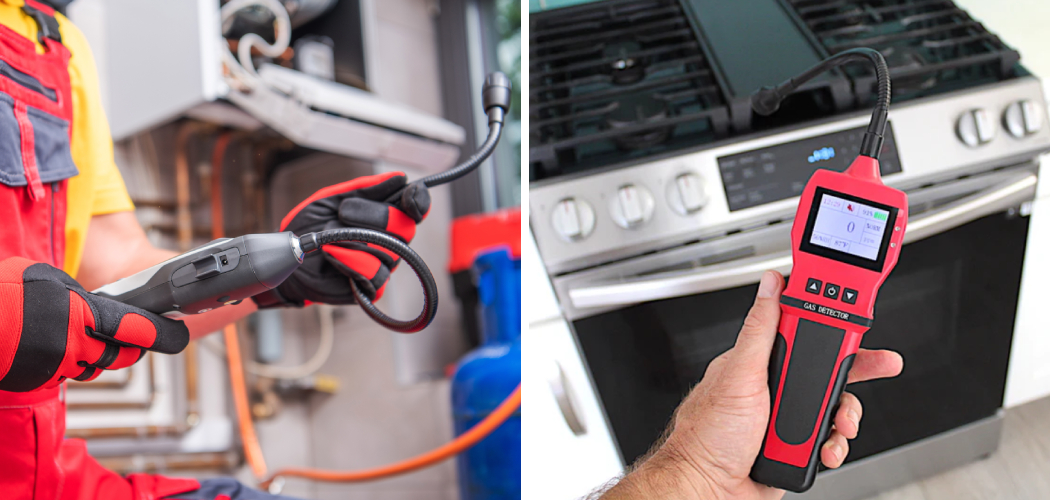Are you worried about gas leaks in your home or workplace? Gas leaks can be hazardous and even deadly if left undetected. That’s why having a gas leak detector on hand is essential to identify and address any potential issues quickly.
Gas leaks can pose serious safety hazards, making it essential to detect them quickly and accurately. A gas leak detector is a vital tool designed to identify the presence of gas in the air, ensuring your living or working environment remains safe. Whether using a detector at home or in an industrial setting, understanding how to operate it correctly is crucial for effective monitoring.
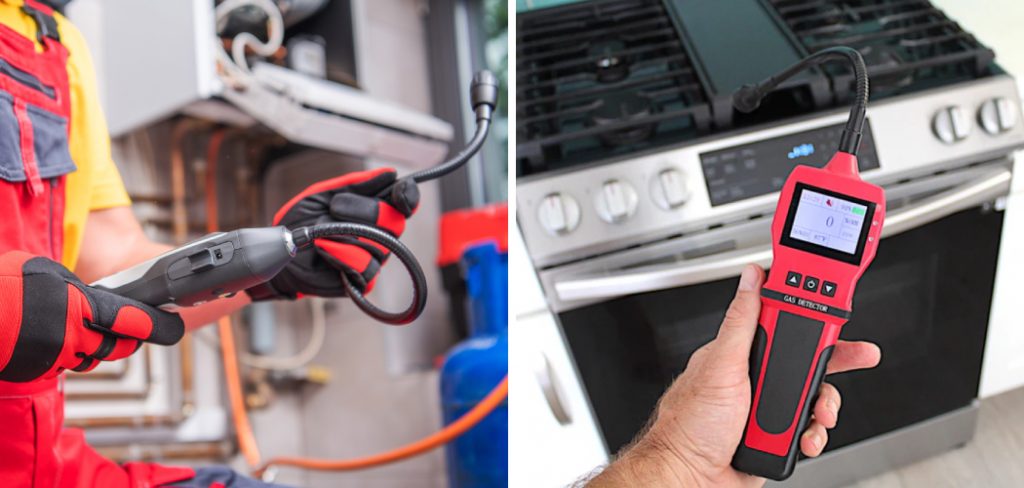
This guide on how to use gas leak detector will walk you through the basic steps and best practices for using a gas leak detector efficiently and safely.
What Are the Benefits of Using a Gas Leak Detector?
There are several benefits to using a gas leak detector, including:
- Early Detection: Gas leaks can be hazardous and even deadly. Using a gas leak detector, you can identify the presence of gas before it reaches dangerous levels.
- Increased Safety: With early detection comes increased safety for yourself and those around you. This is especially important in industrial settings with a higher risk of gas leaks.
- Cost Savings: Detecting a gas leak early on can prevent costly repairs or damages that may occur if the leak is left undetected for an extended period of time.
- Peace of Mind: Peace of Mind: Knowing that your living or working environment is free from dangerous gas levels can provide peace of mind and allow you to focus on your daily tasks without worry.
- Environmental Benefits: Gas leaks pose a risk to human safety and contribute to environmental damage. Using gas detectors, we can minimize the release of harmful gases into the environment and help protect our planet.
- Compliance with Regulations: Many industries have strict regulations regarding gas detection and safety measures. By utilizing gas detectors, individuals and companies can ensure that they comply with these regulations.
10 Easy Steps on How to Use Gas Leak Detector
Step 1. Read the User Manual:
Before operating a gas leak detector, carefully read the user manual provided by the manufacturer. The manual contains crucial information about the device’s features, proper usage, safety precautions, and maintenance guidelines. Understanding these details ensures the detector’s effective and safe operation, helping you identify gas leaks accurately and avoid potential hazards.
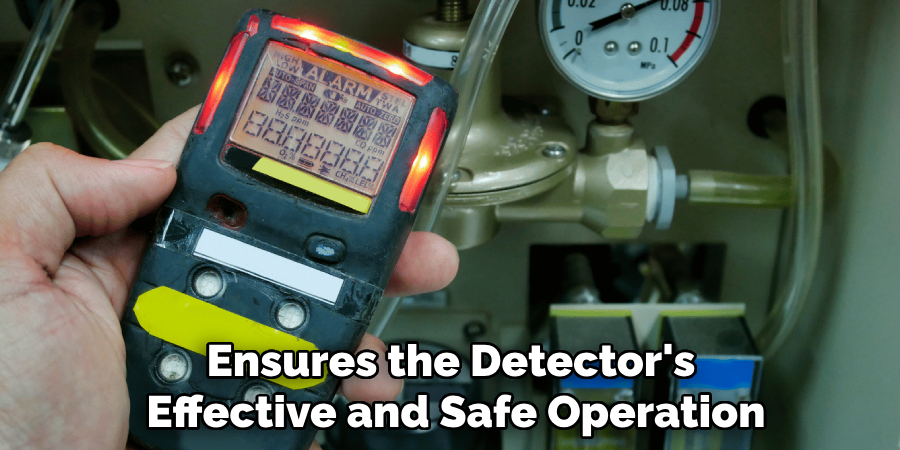
Step 2. Inspect the Detector:
Before using the gas leak detector, it is essential to thoroughly inspect the device for any signs of damage or malfunction. Check for cracks, corrosion, or wear on the external casing, which may affect the detector’s performance. Ensure that the battery compartment is secure and that the batteries are charged or properly installed.
Inspect the sensor area to confirm it is clean and debris-free, as obstructions can interfere with accurate readings. If your detector has a calibration feature, verify it has been calibrated recently according to the manufacturer’s recommendations.
Step 3. Calibrate the Detector:
Proper calibration is essential to maintain the accuracy of your detector. Consult the manufacturer’s manual for specific calibration instructions and recommended intervals. Use a calibration gas that matches the specifications outlined in the manual.
Connect the calibration gas to the detector using the appropriate tubing and ensure a secure fit to avoid leaks. Follow the on-screen prompts or manual instructions to initiate the calibration process. Monitor the readings during calibration to confirm that the detector adjusts to the known gas concentration correctly. Once complete, verify the detector’s performance by testing it in a controlled environment.
Step 4. Turn On the Detector:
Press and hold the power button to turn on the detector until the device powers up. You may hear a beep or see indicator lights activate, signaling that the detector is operational. Allow the device to perform its self-check, which typically includes testing sensors, battery levels, and system functionality. Review any on-screen messages or diagnostic results to ensure the detector is ready for use. If any errors appear, refer to the manual’s troubleshooting section before proceeding.
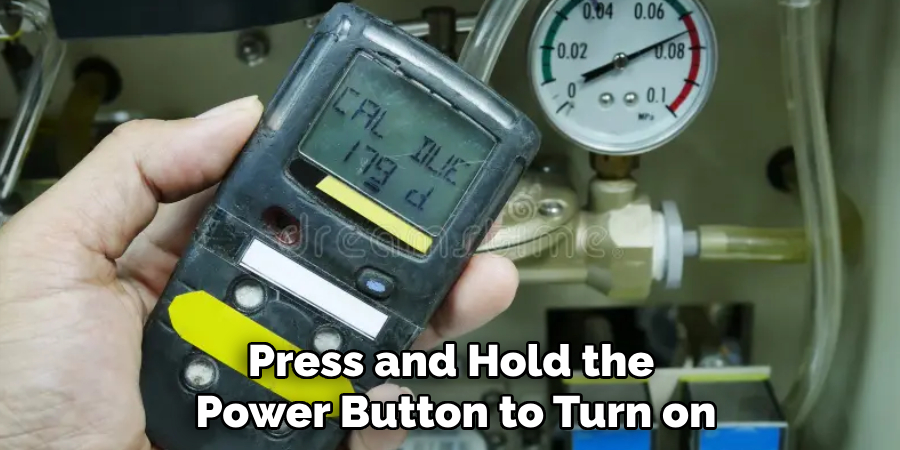
Step 5. Select the Correct Mode:
Most detectors have modes designed for specific scenarios, such as gas detection, monitoring radiation levels, or environmental analysis. Use the mode selection button or dial, as the user manual outlines, to choose the mode best suited for your needs. Ensure the selected mode matches the intended task to avoid inaccurate readings or device malfunctions. Confirm the mode change by checking the display screen for the corresponding mode icon or text. If you are unsure which mode to choose, consult the guidance provided in the manual for optimal device operation.
Step 6. Test in a Safe Area First:
Before using the device in its intended environment, perform a test in a controlled, safe area. This ensures the device functions correctly and allows you to familiarize yourself with its operation. Begin by activating the device and verifying that all components, such as sensors and indicators, work as expected. Observe the initial readings and confirm they align with expected values, as described in the user manual. Conducting this preliminary test minimizes the risk of errors and ensures accurate results when deployed for actual tasks.
Step 7. Scan for Gas Leaks:
To scan for gas leaks, hold the device close to the inspected area, ensuring it can effectively detect any abnormal gas concentrations. Move the device slowly and systematically across all potential leak points, including pipe joints, valves, and connections. Pay attention to any changes in the device’s readings, alarms, or indicators, as these may signal the presence of a gas leak.
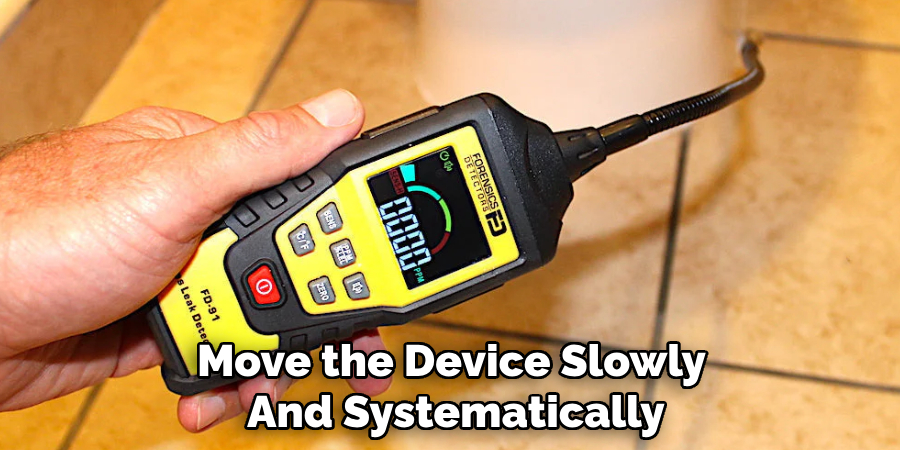
If a leak is detected, follow the recommended safety protocols immediately and take appropriate action to mitigate the risk. Always perform this step in a well-ventilated area and adhere to the guidelines provided in the user manual for accurate and safe operation.
Step 8. Observe the Readings:
Carefully monitor the readings displayed on the device to assess the gas concentration in the area. Ensure that you understand the measurement units and any thresholds indicated in the manual. Compare the readings to the safety standards for the specific gas you are working with. If the readings fall within normal and safe levels, monitor periodically.
However, if the readings exceed safety limits or show erratic behavior, take immediate action by implementing the necessary safety measures and evacuating the area if required. Document the readings for future reference and troubleshooting, if needed.
Step 9. Take Action if a Leak is Detected:
If a gas leak is detected, prioritize safety above all else. Immediately alert all personnel in the vicinity and evacuate the area if necessary. If it is safe to do so, shut off the source of the gas by using the appropriate shutoff valves or emergency controls.
Avoid using any electronic devices, open flames, or equipment that could ignite the gas. If possible, ventilate the area by opening windows and doors to disperse the gas. Notify emergency response teams and follow your organization’s safety protocols for handling gas leaks.
Step 10. Turn Off and Store the Detector:
After completing the inspection or monitoring process, ensure the gas detector is properly turned off according to the manufacturer’s instructions. Clean the device if necessary, removing any dirt or debris that may have accumulated during its use. Store the detector in a clean, dry, and secure location, away from extreme temperatures, moisture, or direct sunlight.
Regularly check the device for any signs of wear or damage and ensure it is calibrated and ready for future use. Proper storage and maintenance will help extend the detector’s life and ensure its reliability.
By following these simple tips, you can ensure the effectiveness and reliability of your gas detector.
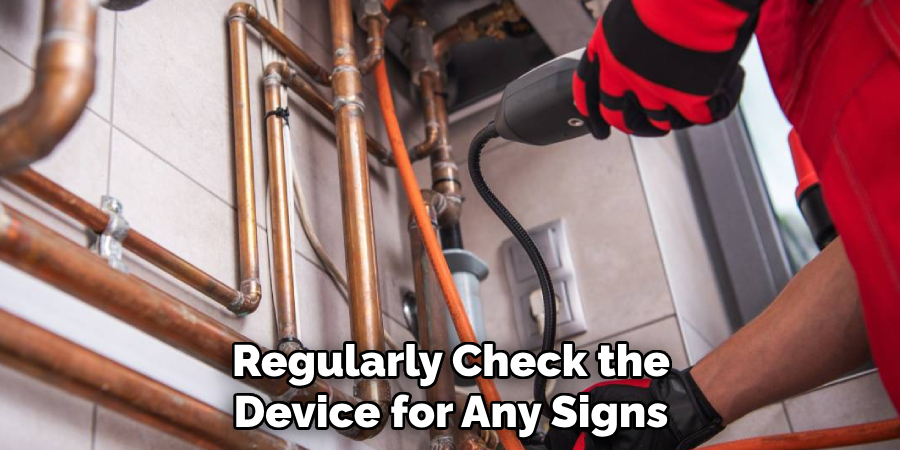
5 Things You Should Avoid
- Using the Detector in Explosive Environments
Avoid operating the gas leak detector in areas with highly flammable or explosive gases unless it is specifically rated for such use. Using the wrong type of detector can lead to dangerous situations.
- Ignoring Manufacturer Instructions
Always read and follow the manufacturer’s usage, maintenance, and calibration guidelines. Ignoring these guidelines can affect the device’s accuracy and reliability.
- Exposing the Detector to Extreme Conditions
Do not subject the detector to extreme temperatures, high humidity, or direct sunlight for prolonged periods. Such conditions can damage the sensitive components and compromise its functionality.
- Skipping Regular Calibration
Avoid neglecting regular calibration as recommended by the manufacturer. An uncalibrated detector may provide inaccurate readings, resulting in dangerous outcomes.
- Using the Detector with a Low Battery
Always check the battery level before use and avoid operating the detector when its battery is low or nearly drained. A weak battery can lead to operational failure or false readings.
Conclusion
How to use gas leak detector is essential for ensuring safety and preventing potential hazards.
Always follow the manufacturer’s guidelines, regularly calibrate the device, and maintain its battery at optimal levels to ensure accurate readings. Conduct periodic inspections and properly store the detector when it is not used. By adhering to these practices, you can effectively use a gas leak detector to promptly identify and address gas leaks, safeguarding property and lives.
Hopefully, this guide has provided you with all the necessary information to use a gas leak detector effectively.

